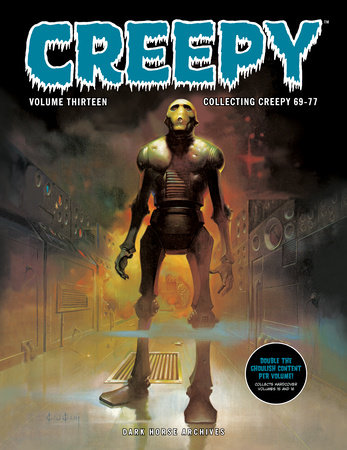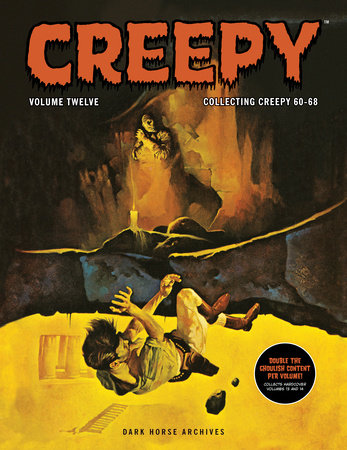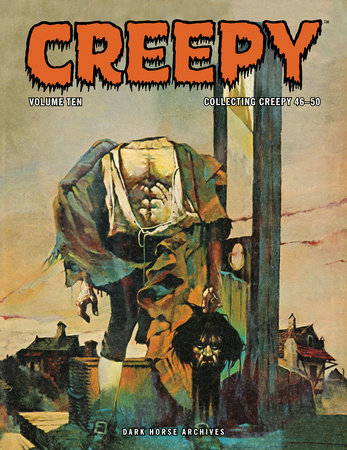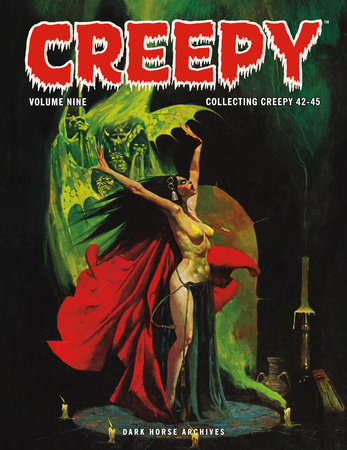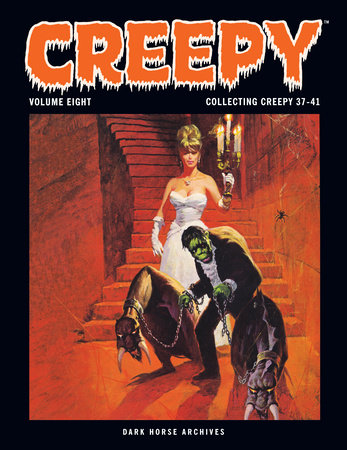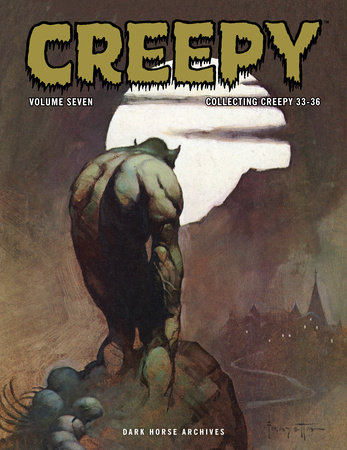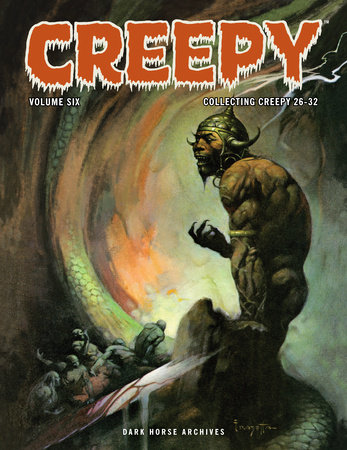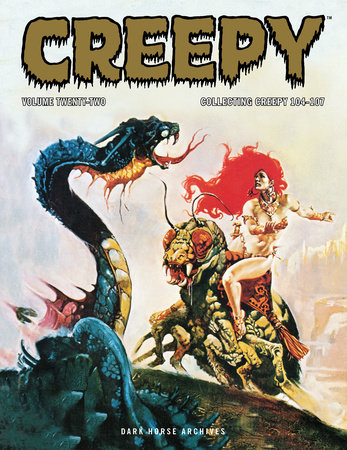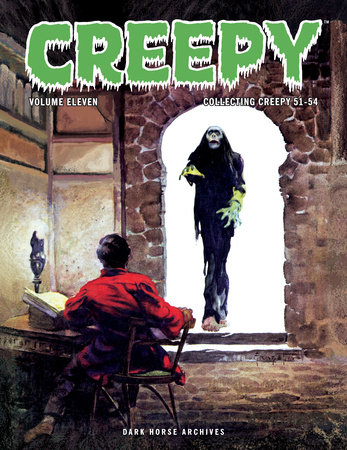
Creepy Archives Volume 11 (Double-Sized Volume)
Written by Gardner Fox, Steve Skeates, Richard Corben, others; Illustrated by Richard Corben, Reed Crandall, Esteban Maroto, others; Cover by Sanjulian
Paperback
November 11, 2025 | ISBN 9781506749679
AmazonBarnes & NobleBooks A MillionBookshop.orgHudson BooksellersPowell'sTargetWalmart
About the Book
LEGENDARY CREATORS OF LEGENDARY TERROR!
Now in a packed-full double volume with twice as many ghoulish stories, previously collected in Dark Horse's hardcover volumes 11 and 12.
Collecting eight full issues of the legendary series, this double volume paperback edition features some of Warren Publishing's first full-color story offerings from the early '70s and features more of the unique talents that made Creepy so tantalizing and timeless. With a gorgeous cover by Frank Frazetta and stories by comic-book talents Richard Corben, Doug Moench, Tom Sutton, and Reed Crandall, topped off with The Creepy Crawley Castle and Werewolf! games, color Sanjulian covers, creator biographies, and Dear Uncle Creepy letters columns!
Collects Creepy magazine #51–#59.


